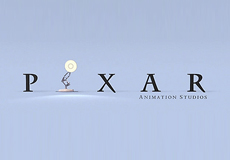By
ETCentricJanuary 23, 2013
Worldwide spending on watching movies last year reached $62.4 billion, up from $61.1 billion in 2011 and $60.1 billion in 2010, according to IHS Screen Digest. The numbers include theatrical releases, disc rentals, pay TV VOD and digital retail purchases and rentals. North America accounted for 41 percent of global movie revenue in 2012, although spending on physical media saw a decline. Continue reading Report: Worldwide Spending on Movies Up $1.3 Billion in 2012
By
ETCentricJanuary 6, 2013
Jeramiah Perkins of the IMAGiNE Group was handed a record prison term for illegal file-sharing. The 40-year old Perkins, who is the reported leader of the in-theater camcording gang, was ordered to serve a 60-month prison term. The sentence surpasses that of IMAGiNE co-defendant Gregory Cherwonik of New York, who received 40 months in November. “In all, five IMAGiNE members have pleaded guilty to conspiracy to commit copyright infringement for operating what prosecutors described as the world’s most prolific piracy release group between 2009 and 2011,” reports Wired. Continue reading Convicted File Sharer Recieves Record 5-Year Prison Term
By
David TobiaDecember 21, 2012
Kickstarter has helped establish an effective crowdsourcing model for startups, and now Tugg.com has begun to show how filmmakers and exhibitors can benefit from a similar approach. Tugg.com allows people to set up movie screenings where customers pay for reserved tickets, and the screenings only happen after the advanced sales cover expenses. Indie filmmakers are using the online booking site to organize screenings of their projects. Continue reading Crowdsourced Cinema: Tugg.com Borrows a Page from Kickstarter
By
David TobiaDecember 19, 2012
When people reference the number of pixels on movie cameras, they are not literally saying the number of pixels, but rather the type of camera, explains Panavision senior VP of Advanced Digital Imaging John Galt. For example, 4K means the camera has 4096 red, 4096 green and 4096 blue photo sites. But Galt suggests that not all cameras are marketed accurately and distinguishes between “marketing” pixels and actual pixels. Continue reading Panavision Exec Discusses Truth About 2K and 4K
By
Karla RobinsonDecember 14, 2012
Movie theater personnel in the Asia-Pacific region can now quickly report illegal video recording to the Motion Picture Association with a new app available for tablets and smartphones.
“Using the mobile app, called MAD4 — abbreviated from ‘Make A Difference’ — theater managers and their teams will be able to type in information about camcording incidents through an online reporting platform,” explains The Hollywood Reporter. “The data will then be available to MPA officials for follow-up action or investigation.”
The MPA announced the new app this week at the CineAsia trade fair in Hong Kong. Also included in the app are training videos and resources to express the impact of piracy on the film industry and inform employees what to do when they witness illegal recording.
“We have been given to understand that more than 90 percent of newly released movies that appear illegally on the Internet and on the streets around the world originate from illegal copies being made in cinemas,” Ashish Saksena, CEO of Indian exhibitor Big Cinemas. “The MAD4 application is a great new tool ensuring that all staff will know what needs to be done to prevent illegal recordings being made in cinemas.”
By
Rob ScottNovember 28, 2012





